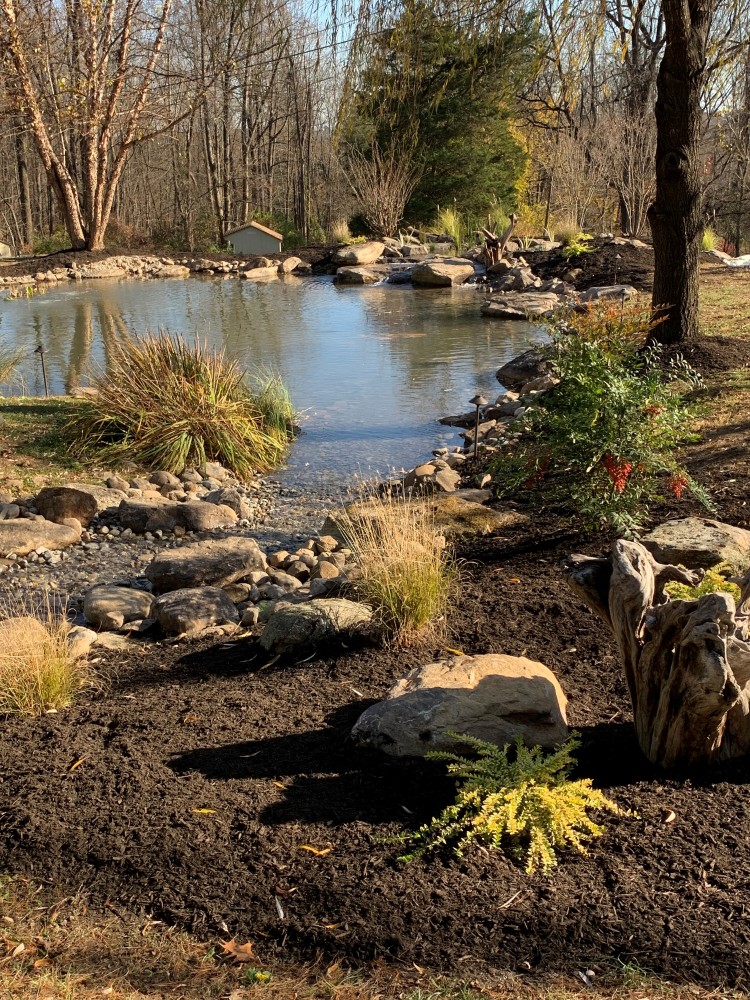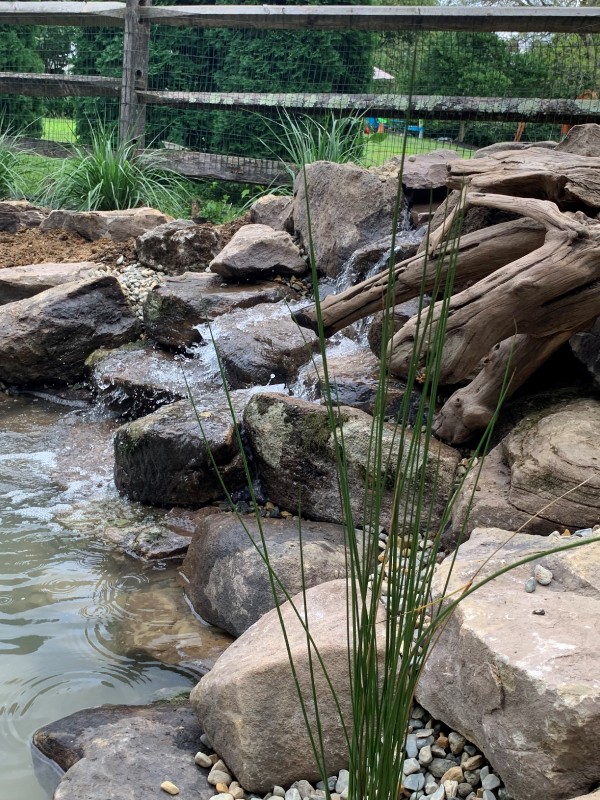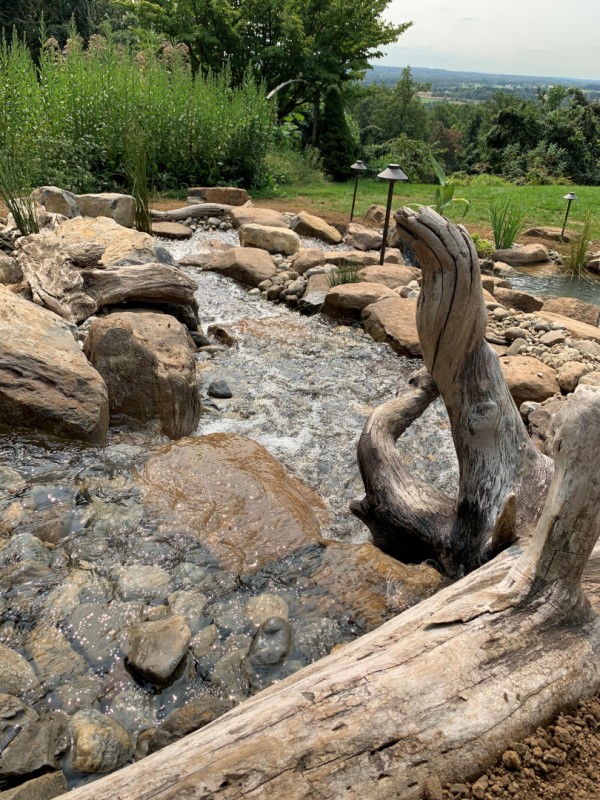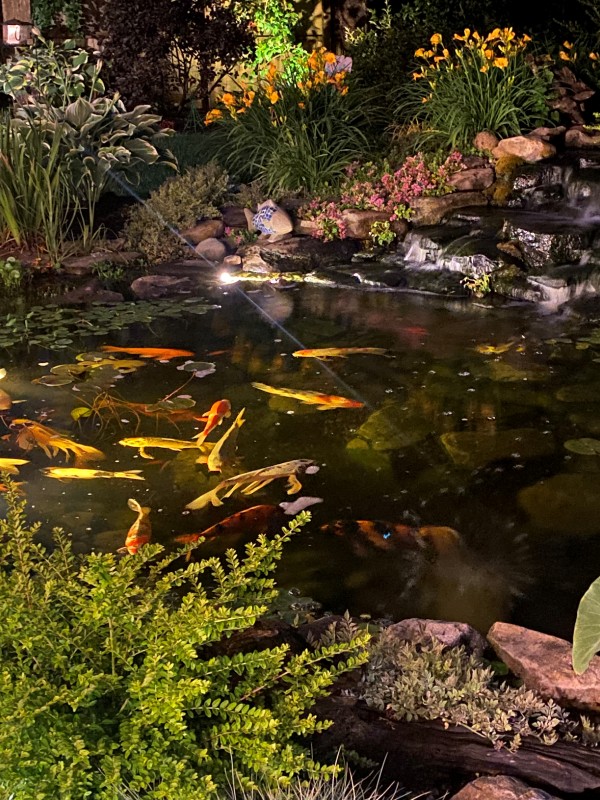Peace in your own Backyard

 For nearly three decades, George Mihalchick has been helping people connect with nature through water features. From fish and koi ponds and bubbling fountains to disappearing waterfalls and all the accessories in between, Ponds by George can bring a wealth of creativity to any space.
For nearly three decades, George Mihalchick has been helping people connect with nature through water features. From fish and koi ponds and bubbling fountains to disappearing waterfalls and all the accessories in between, Ponds by George can bring a wealth of creativity to any space.
As spring approaches, it's a great time to consider bringing these features to your own yard. If you're contemplating a pond project, Mihalchick says the following topics are some of the most important to consider.
LOCATION: Should it be close to the house, patio, porch, etc.? You definitely want to see and hear it from a comfortable location. Don't put a pond in the lowest area of the property as outside water can enter the pond and harm the fish, and/or put pressure under the pond liner and possibly lift the liner and rocks inside the pond. Sun or shade have some impact; water plants will perform better in the sun allowing more root growth, which in turn filters the water better. Shade means more leaves and debris can fall into the pond causing more maintenance.
HOW BIG?: Bigger is better! The bigger a pond is, the easier the maintenance. A bigger pond allows for more water movement and more filtration which results in less algae. Depth of 24-to-30 inches is plenty. Most townships require a fence around the pond over a 24-inch depth.
 DIRT: A lot of dirt comes out of the hole dug for a pond. Most of the dirt will be used around the waterfall, some will be used in the landscaping around the pond as well. Sometimes you will need to find places to put any excess dirt.
DIRT: A lot of dirt comes out of the hole dug for a pond. Most of the dirt will be used around the waterfall, some will be used in the landscaping around the pond as well. Sometimes you will need to find places to put any excess dirt.
WATER LINE: A direct waterline is not needed to have a pond. Once you fill the pond however, you will need to top it off due to evaporation. You will need to use a garden hose to add to the water level if there is no rain for a while. If this becomes troublesome, then an autofill can always be added.
 FILTRATION: This is the most important. The bog or wetland filtration is the best type. This is created with gravel and plants and no filter pads. This is completely natural allowing the water to move up through the gravel into the roots of aquatic plants growing in the gravel. The fish waste is absorbed into the roots and turned into usable nutrients for the pond, keeping the water crystal clear. Cleaning can be as little as once every one to two years depending on fish load.
FILTRATION: This is the most important. The bog or wetland filtration is the best type. This is created with gravel and plants and no filter pads. This is completely natural allowing the water to move up through the gravel into the roots of aquatic plants growing in the gravel. The fish waste is absorbed into the roots and turned into usable nutrients for the pond, keeping the water crystal clear. Cleaning can be as little as once every one to two years depending on fish load.
COST: This is relative to size and type of filtration. Extras such as lighting, landscaping, driftwood and fish caves will add costs but have an amazing impact on the final project.
Ponds by George
1855 Street Road
Southampton, Pa.
(215) 396-7500
pondsbygeorge@gmail.com
Published (and copyrighted) in House & Home, Volume 22, Issue 4 (January/February 2022).
For more info on House & Home magazine, click here.
To subscribe to House & Home magazine, click here.
To advertise in House & Home magazine, call 610-272-3120.
